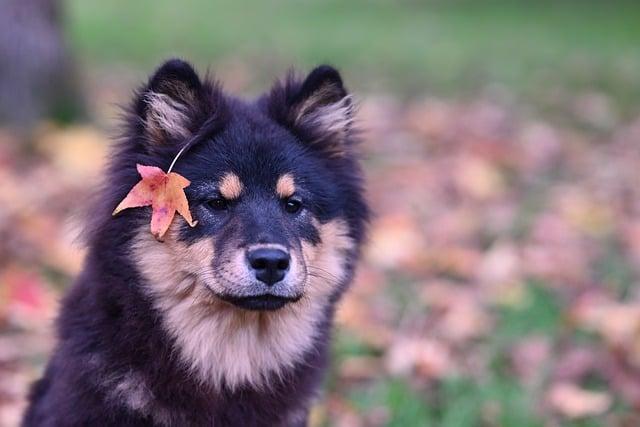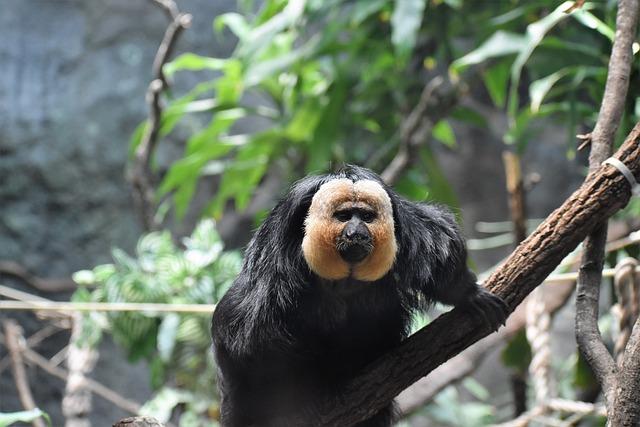In a quiet neighborhood, a family faced an unexpected threat when a stranger approached their home. Just as fear began to creep in, their loyal German Shepherd, Max, sprang into action. With a deep bark and a protective stance, he positioned himself between the intruder and his family, showcasing unwavering courage. This moment proved that not all dogs are created equal; some are instinctively wired to defend. When choosing a canine companion, consider a breed known for its protective nature. A dog like Max could be your ultimate guardian, ensuring safety and peace of mind.
Contents
- Understanding the Traits of Protective Dog Breeds
- Evaluating Temperament and Trainability for Personal Safety
- Top Dog Breeds Known for Their Guarding Abilities
- Essential Training Techniques for Developing a Loyal Protector
- Q&A
Understanding the Traits of Protective Dog Breeds
When considering a canine companion that offers both loyalty and protection, it’s essential to recognize the innate characteristics that define protective dog breeds. These breeds are often characterized by their **strong instincts**, which drive them to guard their families and territories. Their natural vigilance makes them excellent watchdogs, always alert to potential threats. This instinctual behavior is not just a trait; it is deeply embedded in their genetic makeup, honed over generations to serve as guardians.
Another significant trait of protective breeds is their **intelligence and trainability**. Many of these dogs possess a keen ability to learn commands and respond to training, making them not only reliable protectors but also obedient companions. This intelligence allows them to assess situations quickly and make decisions that can keep their families safe. Owners who invest time in training their dogs will find that these breeds can be both protective and well-mannered, striking a balance between vigilance and sociability.
Protective dog breeds also exhibit a **strong bond with their families**. This loyalty is often accompanied by a natural desire to please their owners, which can enhance their protective instincts. Dogs that feel a deep connection with their human companions are more likely to act decisively in defense of their loved ones. This bond fosters a sense of security, as these dogs are not just protectors; they are also devoted family members who thrive on companionship and affection.
Lastly, the **physical attributes** of protective breeds play a crucial role in their ability to defend. Many of these dogs are larger and more muscular, equipped with the strength necessary to deter intruders. Their imposing presence alone can be a significant deterrent to potential threats. Coupled with their agility and endurance, these breeds are well-suited for protective roles, ensuring that they can respond effectively in various situations. Choosing a dog with these traits means investing in a lifelong guardian who will stand by your side through thick and thin.
Evaluating Temperament and Trainability for Personal Safety
When considering a dog for personal safety, understanding the animal’s temperament is crucial. A dog that exhibits a balanced temperament will be more reliable in high-stress situations. Look for breeds known for their confidence, calmness, and loyalty. These traits ensure that the dog can assess threats without panicking, allowing them to act decisively when needed. A well-adjusted dog will not only protect you but also remain composed in various environments.
Trainability is another essential factor in selecting a protective dog. A breed that is eager to learn and responsive to commands can be effectively trained to respond to specific situations. Consider the following attributes when evaluating trainability:
- Intelligence: Breeds that are quick learners can grasp commands and cues faster.
- Motivation: Dogs that are food or play-driven tend to engage more actively in training sessions.
- Socialization: A well-socialized dog can differentiate between normal and threatening behavior, enhancing their protective instincts.
It’s important to remember that a dog’s protective instincts can be honed through consistent training and socialization. Engaging in obedience training not only strengthens the bond between you and your dog but also instills a sense of discipline. A dog that understands commands and boundaries is more likely to act appropriately in a crisis, providing you with the security you desire. Regular training sessions can also help mitigate any behavioral issues that may arise, ensuring your dog remains a reliable guardian.
Lastly, consider the dog’s energy levels and exercise needs. A well-exercised dog is typically more focused and less prone to anxiety, which can lead to better decision-making in stressful situations. Choose a breed that matches your lifestyle, as this will facilitate a harmonious relationship and enhance the dog’s ability to protect you. By investing time in evaluating these factors, you can find a canine companion that not only defends you but also enriches your life.
Top Dog Breeds Known for Their Guarding Abilities
When it comes to choosing a canine companion that can also serve as a protector, certain breeds stand out due to their natural guarding instincts and loyalty. These dogs are not only fierce defenders but also loving family members. Their protective nature makes them ideal for families, individuals, and anyone looking for an extra layer of security. Here are some of the top breeds renowned for their guarding abilities:
- German Shepherd: Known for their intelligence and versatility, German Shepherds are often employed in police and military roles. Their strong protective instincts and loyalty to their families make them exceptional guardians.
- Rottweiler: With a powerful build and a confident demeanor, Rottweilers are natural protectors. They are fiercely loyal to their families and can be both gentle and formidable when the situation calls for it.
- Doberman Pinscher: Sleek and agile, Dobermans are known for their alertness and intelligence. They are highly trainable and can be both affectionate companions and vigilant guardians.
- Bullmastiff: This breed combines strength and a calm demeanor. Bullmastiffs are known for their protective nature and can be incredibly gentle with their families while being formidable when it comes to guarding their home.
In addition to their physical prowess, these breeds possess a keen sense of awareness that allows them to detect potential threats. Their instincts often kick in at the slightest hint of danger, making them excellent watchdogs. Training and socialization are crucial for these breeds to ensure they can differentiate between normal situations and genuine threats, allowing them to act appropriately.
- Belgian Malinois: Similar to the German Shepherd, the Belgian Malinois is a favorite among law enforcement for its agility and intelligence. This breed is known for its high energy levels and requires regular exercise, making them ideal for active families.
- Akita: Akitas are known for their loyalty and protective nature. They form strong bonds with their families and can be wary of strangers, making them excellent guardians.
- Boxer: Boxers are playful yet protective. Their boundless energy and affectionate nature make them great family pets, while their instinct to protect their loved ones is undeniable.
Choosing the right breed for guarding purposes involves considering not only their protective instincts but also their compatibility with your lifestyle. Each of these breeds requires proper training and socialization to ensure they grow into well-rounded companions. Investing time in their training will enhance their natural guarding abilities and strengthen the bond between you and your dog, ensuring that you have a loyal protector by your side.
Essential Training Techniques for Developing a Loyal Protector
To cultivate a loyal protector, it’s essential to implement training techniques that foster both trust and confidence in your dog. Start with **positive reinforcement**, which encourages desired behaviors through rewards such as treats, praise, or playtime. This method not only strengthens the bond between you and your dog but also instills a sense of security, making them more likely to respond protectively when needed. Consistency is key; ensure that all family members use the same commands and rewards to avoid confusion.
Another effective technique is **socialization**. Expose your dog to various environments, people, and other animals from a young age. This exposure helps them learn to distinguish between normal situations and potential threats. A well-socialized dog is less likely to react fearfully or aggressively, allowing them to assess situations calmly. Incorporate controlled introductions to new experiences, gradually increasing the complexity as your dog becomes more comfortable.
Incorporating **obedience training** is crucial for developing a protector. Teach basic commands such as sit, stay, and come, as these commands form the foundation for more advanced protective behaviors. Once your dog masters these basics, you can introduce more complex commands that require them to respond to specific situations, such as alerting you to an intruder or staying close during walks. Regular practice not only reinforces their training but also keeps their skills sharp.
Lastly, consider engaging in **protection sports** or classes that focus on developing protective instincts in a controlled environment. Activities like Schutzhund or protection dog training can enhance your dog’s natural guarding abilities while ensuring they remain well-mannered and obedient. These programs often emphasize the importance of a strong handler-dog relationship, which is vital for a loyal protector. By participating in these activities, you’ll not only strengthen your dog’s protective instincts but also provide them with an outlet for their energy and intelligence.
Q&A
-
What breeds are known for their protective instincts?
Several breeds are renowned for their guarding abilities, including:
- German Shepherds
- Rottweilers
- Doberman Pinschers
- Belgian Malinois
- Boxers
These breeds are not only loyal but also possess the physical strength and intelligence needed to protect their owners effectively.
-
How can I train my dog to be more protective?
Training your dog to be protective involves:
- Socialization: Expose your dog to various environments and people.
- Obedience Training: Teach basic commands to establish control.
- Protection Training: Consider professional training focused on guarding behaviors.
With consistent training, your dog can learn to distinguish between normal situations and potential threats.
-
Are protective dogs safe around children?
Many protective breeds can be safe around children when properly socialized and trained. It’s crucial to:
- Supervise interactions between dogs and children.
- Teach children how to interact respectfully with dogs.
- Choose a breed known for its gentle temperament.
With the right approach, protective dogs can be loving companions for families.
-
What should I consider before getting a protective dog?
Before bringing a protective dog into your home, consider:
- Your lifestyle: Ensure you have time for training and exercise.
- Space: Larger breeds require more room to roam.
- Experience: Some breeds may be better suited for experienced owners.
Choosing the right dog for your situation is essential for a harmonious relationship.
choosing the right dog for protection goes beyond breed; it’s about temperament, training, and your lifestyle. Invest in a loyal companion that not only defends you but also enriches your life. Your safety and peace of mind are worth it.

大家好,我是彼得潘,專業的手法身體治療師。我喜歡探索和研究各種主題,並透過與人工智慧的合作分享專業、實用、有趣的文章。我們定期進行人工審核,以確保內容的準確性。如果您發現文章中有任何不準確的地方,請隨時與我們聯繫,我們會及時糾正。您可以透過 [email protected] 與我們聯繫。



